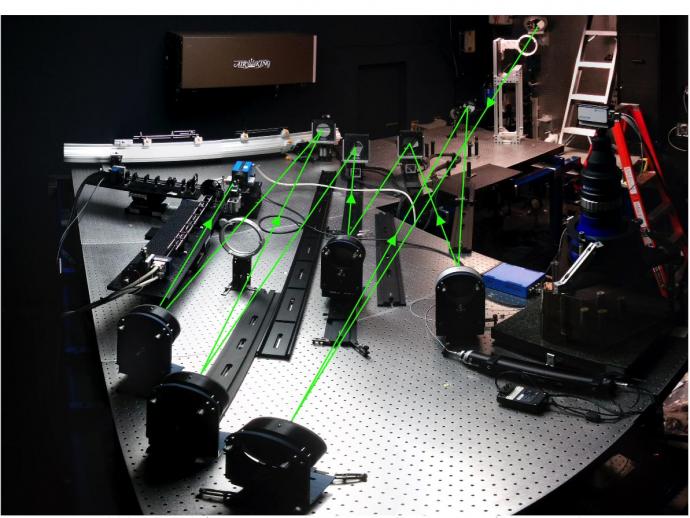Study Assesses 30 Years of Landmark Astronomical Advances at NSF, Highlights NJIT's Big Bear

A new study highlighting some of the most influential technological breakthroughs that shaped astronomical research over the last 30 years includes recognition for NJIT-Center for Solar-Terrestrial Research’s Big Bear Solar Observatory (BBSO) and its three generations of pioneering adaptive optics technologies, which have significantly advanced ground-based exploration of the Sun.
The study closely links the impact of breakthroughs with their federal support from more than 500 grants from the National Science Foundation’s Advanced Technologies and Instrumentation (NSF-ATI) program. More than 157,000 peer-reviewed papers on astronomical technology research from 1988-2015 were assessed in the study to determine their impact in the field using metrics such as impact factor, measured as the number of a paper’s citations divided by the median number of citations for that year. Results of the study were released today in the Journal of Astronomical Telescopes, Instruments and Systems.
“This study shows how grant support for the technology behind astronomy has transformed the field. A new instrument or method, such as adaptive optics, can be a ‘science multiplier’ that opens vistas that were never before possible to explore. It paves the way for science to advance,” said the study’s lead author Peter Kurczynski, former Program Director at the National Science Foundation who is now the Chief Scientist of Cosmic Origins at NASA Goddard Space Flight Center. “Sometimes you have to be patient. It can take a decade or more for a new technology to mature, but when it does it can change everything. Investments in technology may seem risky or expensive at the time, but in the long run they are a safe bet for the advancement of science.”
Over the last 30 years, NSF’s ATI program has supported astronomers to develop new ways to study the universe. The funding has aided the development of devices that include cameras and other optical instruments, as well as innovations in telescope design. The new study traced the origins of such workhorse technologies in use today back to their humble origins years or even decades ago in early grants from NSF, while gauging the impact of technologies that are just now advancing the state-of-the-art.
BBSO was recognized among the landmark technological advancements as the first solar telescope to successfully develop and employ multi-conjugate adaptive optics (MCAO), a technology that expanded the telescope’s optical field for observations on the Sun by three-fold.
“[With MCAO], scientists have been able to address fundamental issues in solar astronomy in being able to capture where explosive events occur, seemingly everywhere all at once, in the now-corrected wide field of view of the Sun,” said Phil Goode, distinguished research professor of physics at NJIT who has overseen design, fundraising, construction of, and scientific results from BBSO’s telescope since 2002. “Four years after first light in summer 2016 with this complex technology, BBSO still has the only system of its kind operating at any solar observatory.”
Above: Image of BBSO MCAO setup with light path shown in green. The heart of the instrument are three deformable mirrors (DMs) in the upper center of the image. The DMs change shape 100s of times a second to cancel the blurring atmospheric turbulence. Credit: NJIT/BBSO
BBSO is also credited in the paper as having been a “pathfinder for instrumentation intended for the 4-m Daniel K. Inouye Solar Telescope.” The Daniel K. Inouye Solar Telescope is currently the largest solar telescope in the world, a distinction which was held by BBSO until this year.
For further details about NSF-ATI, visit: https://www.nsf.gov/funding/pgm_summ.jsp?pims_id=505586.
To learn more about Big Bear Solar Observatory, visit: http://www.bbso.njit.edu.


